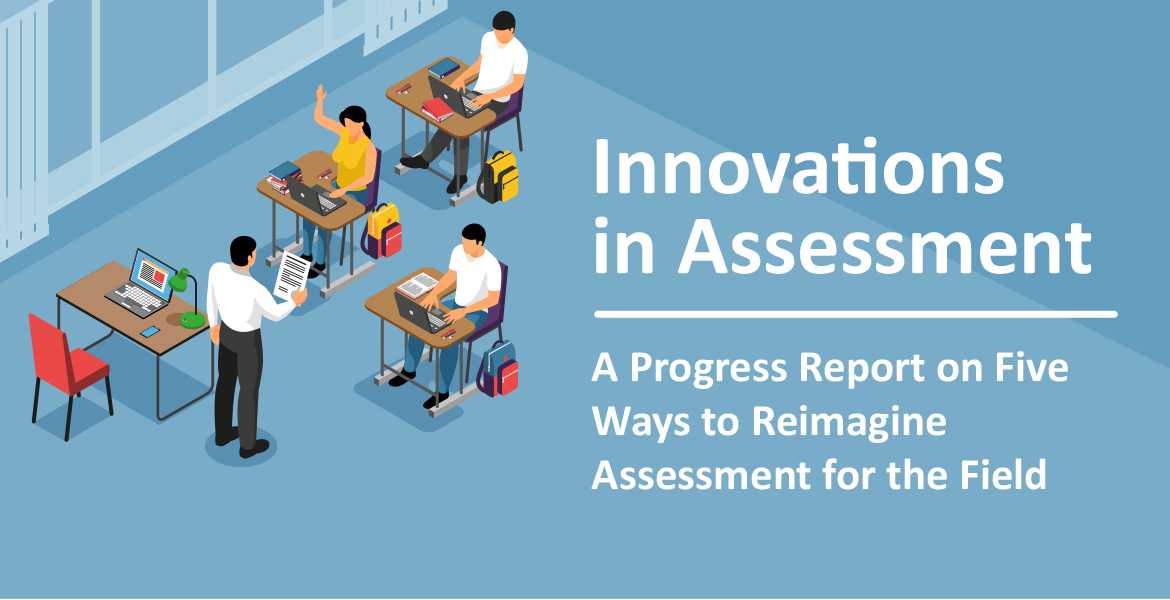
How important are standard assessments? It depends on who you ask. Teachers generally agree that testing is important—but also that traditional bubble-sheet exams can feel more like an interruption than a key component of inquiry-based teaching and learning. Families want to know that students are on track for college or career, but also tend to put more stock in classroom grades than standardized scores. State and system leaders rely on testing programs for critical accountability data to shape policy and program decisions. But for individual schools, classrooms and students—particularly in historically marginalized communities—the insights are incomplete.
Across these many perspectives, one thing is clear. Current tests don’t tell us all that we need to know. But what if they could?
What if a Massachusetts science exam asked middle schoolers to perform an experiment, collect data and analyze it to answer far-ranging questions about water use? What if the KIPP charter network assessed school quality by counting positive examples of an engaging, healthy culture, like the number of students in enrichment activities? What if Texas schools gave shorter standards-aligned tests three times during the school year, so students had more than one chance to demonstrate learning and teachers could use the results to tailor instruction?
These are among five new visions for assessment being piloted in the 2022–23 school year, as part of the Innovations in Assessment and New Measures Grant Program. The grantees include three state education agencies—Massachusetts, New Mexico and Texas—and two charter-management organizations—KIPP Public Schools and Summit Public Schools. The program is led by Education First and funded by the Bill & Melinda Gates Foundation and Walton Family Foundation.
The grantees’ efforts are as diverse as the organizations and the communities they serve. Yet they hold one quality in common: each approach was crafted using human-centered design with an equity lens, in partnership with the students, families and educators whose needs are not fully met by our current systems. After three years of listening, reimagining, co-designing, and carefully building out new assessments, we are sharing this progress report to the field.
The work began in 2020 during the COVID-19 pandemic, which shut schools down nationwide and caused states to pause annual testing programs. Amid these vast disruptions, states, educators, advocates and communities asked hard questions about the role and influence of traditional assessments of student and school performance.
Whose needs were being met by traditional assessments? Why did current testing programs prioritize sorting and comparing students to standards and one another—assessment of learning—rather than serve as engaging learning experiences to diagnose strengths and monitor progress—assessment for learning? What did the people closest to the classroom, such as students, teachers, families and school leaders, consider the strengths and challenges of current assessments? What types of institutional, systemic and ideological biases influenced the experiences of some individuals and groups?
The importance of maintaining high-quality, standards-aligned assessments was not in question. The detailed data such tests provide are crucial: they show which pathways are more and less successful for students, diagnose trends and opportunities across states and systems, and hold educators and policymakers to account for the persistent challenges that students experience who are BIPOC, from families experiencing poverty or are English-language learners.
Yet public patience with standard assessments is fraying. And we have not yet realized the full potential of testing programs to directly benefit teaching and learning. That insight inspired the twin focuses of this program: Grantees would not only craft innovative approaches to assessment, they also would intentionally co-create these solutions with the students, teachers and families closest to the current system. These efforts have created innovative solutions to meet local needs, which we detail in a series of case studies. But they also have established new models of assessment and accountability with relevance to schools and systems across the country. They include:
Read the full report and learn more about the work of each team and the lessons learned as they reimagined assessments.
